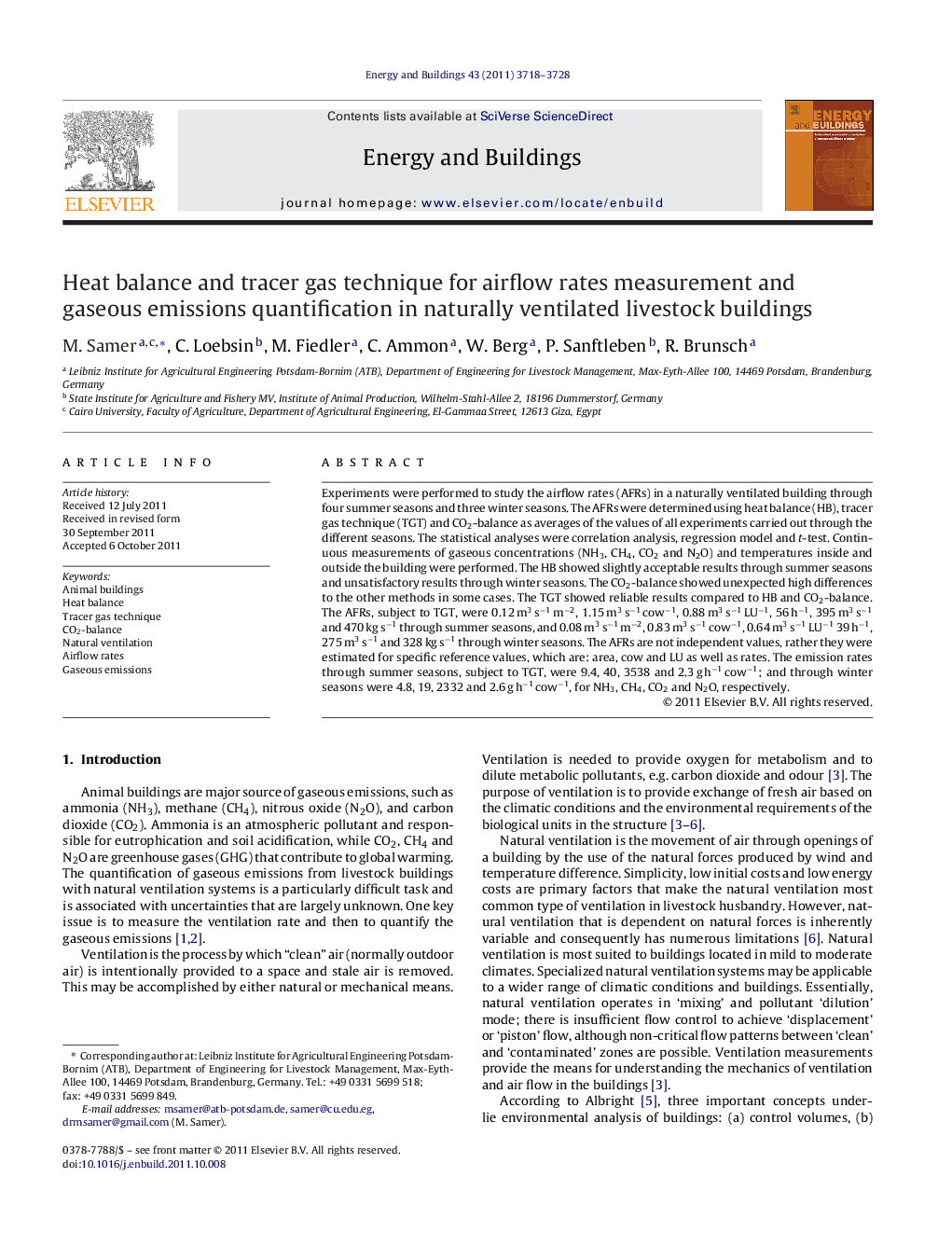| Article ID | Journal | Published Year | Pages | File Type |
|---|---|---|---|---|
| 264240 | Energy and Buildings | 2011 | 11 Pages |
Experiments were performed to study the airflow rates (AFRs) in a naturally ventilated building through four summer seasons and three winter seasons. The AFRs were determined using heat balance (HB), tracer gas technique (TGT) and CO2-balance as averages of the values of all experiments carried out through the different seasons. The statistical analyses were correlation analysis, regression model and t-test. Continuous measurements of gaseous concentrations (NH3, CH4, CO2 and N2O) and temperatures inside and outside the building were performed. The HB showed slightly acceptable results through summer seasons and unsatisfactory results through winter seasons. The CO2-balance showed unexpected high differences to the other methods in some cases. The TGT showed reliable results compared to HB and CO2-balance. The AFRs, subject to TGT, were 0.12 m3 s−1 m−2, 1.15 m3 s−1 cow−1, 0.88 m3 s−1 LU−1, 56 h−1, 395 m3 s−1 and 470 kg s−1 through summer seasons, and 0.08 m3 s−1 m−2, 0.83 m3 s−1 cow−1, 0.64 m3 s−1 LU−1 39 h−1, 275 m3 s−1 and 328 kg s−1 through winter seasons. The AFRs are not independent values, rather they were estimated for specific reference values, which are: area, cow and LU as well as rates. The emission rates through summer seasons, subject to TGT, were 9.4, 40, 3538 and 2.3 g h−1 cow−1; and through winter seasons were 4.8, 19, 2332 and 2.6 g h−1 cow−1, for NH3, CH4, CO2 and N2O, respectively.
► The heat balance showed slightly acceptable results through summer seasons and unsatisfactory results through winter seasons. ► The CO2-balance showed unexpected high differences to the other methods in some cases. ► The tracer gas technique showed reliable results compared to heat balance and CO2-balance.
